Steve Sybesma 2020
Co-founder of Deer Creek Music Center and concert promoter legend
In the interview, Sybesma talks about:
- The history of Deer Creek Music Center
- The Rolling Stones role in his career
- Payouts for some of the biggest bands
- The first time he wrote a check for a million dollars
- How he and his partners built their business
- Sunshine Promotions competitors
- His new archive website indianarockhistory.com
- The inspiration to build an outdoor amphitheater
- What he did after leaving Sunshine Promotions
- His plans on writing a book
- Why he sold out his shares of Sunshine Promotions
- Why the Rolling Stones avoided Indianapolis for decades
In this episode, we have a new conversation. Our guest is Steve Sybesma, a longtime concert promoter and one of the partners in the creation of Deer Creek Music Center outside Indianapolis. Sybesma hopped on a call with Marc to tell him about his newly created Indiana concert archive website, and about his concert promotion journey.
In the interview, Steve talks about how the Rolling Stones played a pivotal role in taking out his competitors and why the Stones steered clear of Indiana for years; how much U2 and AC/DC got paid the first time they played a show in Indiana; and the fascinating history of Deer Creek Music Center.
Steve Sybesma Links:
Watch on Youtube
Steve Sybesma interview transcription:
Marc Allan – Thanks for taking the time, I appreciate it. Why don’t we start out by talking about the website? where did the idea come from and how long did it take you to put together?
Steve Sybesma: I thought a good website for the history would be a great way to record things. A little bit of a labor of love. At this point now, there’s over 3,500 shows and it’s still not complete.
Marc Allan – I marvel at that list, and just who played here and when and where. It’s an amazing resource.
Steve Sybesma: That’s what I like about it. It’s a resource and it’s something that if it’s not recorded now, it’s never gonna happen.
Marc Allan – You started, you said in ’72, was that Isaac Hayes? Do I
remember that correctly, that that was your first show?
Steve Sybesma: That was Dave Lucas’s show.
Marc Allan – Oh, okay.
Steve Sybesma: Dave Lucas and Joe Halderman started Sunshine Promotions just before I started promoting. I joined Dave and Joe in
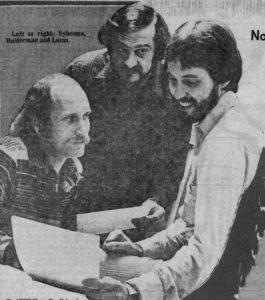
summer of ’74. I kept all my calendars, where I have notes in my calendars from 1972 on. And at Sunshine, we kept records because we were always competing with other promoters. We always needed to reference, well, we did Van Halen in Indianapolis and Evansville and Fort Wayne on these
dates. It’s kind of our day, you know. Why would you give it to them? We’re the history, we’re the promoter of record with that artist. And we kept a record of the artist, who was the opening act, what the attendance was, what the gross receipts were and how much we paid the artists. So all that information is also in there, which is something that otherwise would never be known. Interesting that our first Rolling Stones show, we paid ’em $50,000 in 1975. It’s interesting that we paid AC/DC $250 for their first show at the Circle Theater. With Foreigner the headliner, and it’s interesting that we paid U2 $2,000 in 1984 to open for The J. Geils Band.
Marc Allan – What was the biggest payout you ever had?
Steve Sybesma: The biggest payout to an artist?
Marc Allan – Yes, to an artist.
Steve Sybesma: Well, I guess the first time I ever wrote a check to an artist for over $1 million in 1989, Rolling Stones, we had the two shows at the, was it the Hoosier? Yeah, Hoosier Dome.
Marc Allan – Yeah, the Hoosier Dome.
Steve Sybesma: Back then, that was probably one of the biggest guarantees that got bigger as the years went on.
Marc Allan – Yeah, yeah, and so did concert ticket prices. I mean, you’ve got a lot of great pictures on the site of ads for ticket for concerts that were $5. I can remember when The Eagles played at Deer Creek and charged $100, and everybody was just shocked at the idea of $100. And now, of course, it’s routine to be over $100 for a ticket.
Steve Sybesma: They were shocked, but they paid it.
Marc Allan – ’74, you started with Sunshine, or you and Dave got together and made Sunshine.
Steve Sybesma: And Joe Halderman was 1971 to like, ’81 or ’82, so there were three of us until he left.
Marc Allan – What happened to build Sunshine from ’74 to ’89?
Steve Sybesma: We were aggressive. Dave, Joe and I, the three of us, we were aggressive. Each of us had a relationship with different agents, but we
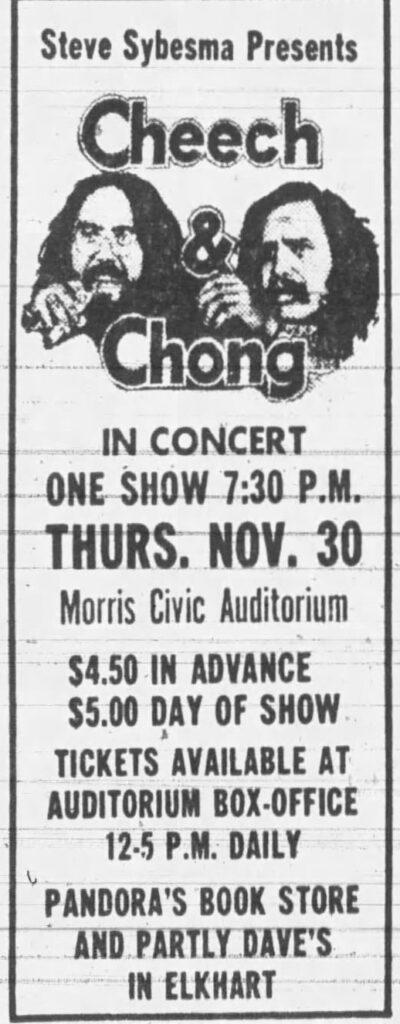
were not just doing shows in Indianapolis. But even when we started early, we were doing shows in Indiana, Ohio, Kentucky, and Tennessee. And there’s always a lot of competition. But in the early years, the biggest competition, there was Belkin Productions coming in from Cleveland. There was another company out of Cleveland called, and I love the name of this company. He always said, “Brought to you by A Friend” So his company was called A Friend and I love that name. Anyway, the guy name was Roger Abramson and out of Detroit was Bob Bageris, which was Bamboo Productions. So those three promoters were coming into Indianapolis, doing the big shows when we got started. So we had to fight against them. In late ’74, we did three Bachman Turner Overdrive shows. Those three shows sold out and we made about $20,000 a show. That was a lot of money in 1974, but we were building not just Indianapolis, but the other markets, so we were doing more and more shows. And that was a big boost to us, helped us because Sunshine never had an investor. We started from ground zero and none of us had any money, but each of us borrowed from the bank. When I came in, it was my obligation to borrow from the bank personally, $7,500 and put it in the company. So each of us did that and we’d make money, we’d lose money, we’d make money. We grew little by little, but pretty fast. And in 1975, we booked The Rolling Stones. Now, there was an agent out of New York, called Frank Barsalona, Premier Talent. Frank Barsalona put together a network of promoters, of young promoters in America. So once we did The Stones in ’75, the competition for us was not as tough. That really gave our company a boost.
Marc Allan – So once you proved that you could do a big show, you were home–free or clear, not home–free exactly, but it certainly made things easier.
Steve Sybesma: We had done other big shows before The Stones, but The Stones were the biggest, you know?
Marc Allan – Right.
Steve Sybesma: There was nobody bigger than The Rolling Stones in 1975. But we booked a show at Indiana University, paid $50,000 plus a percentage and we sold out instantly, of course. And then they made another 42,000. In the same time period in 1975, we were able to book
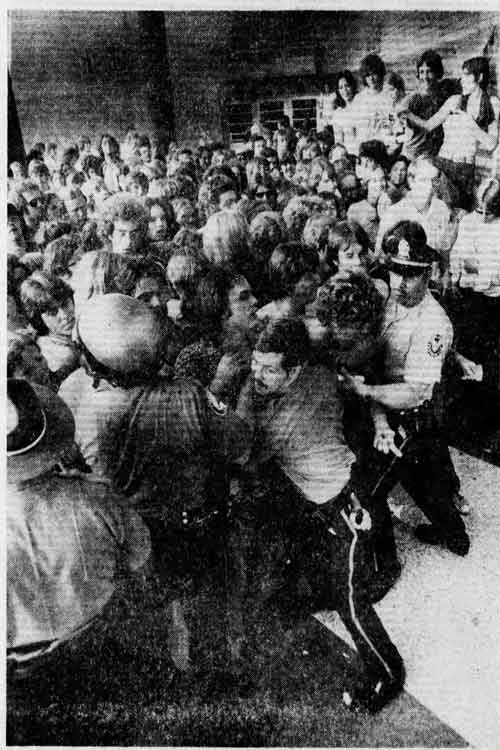
Freedom Hall in Louisville. Only this time, we had to pay ’em 100 grand and we said, “No problem,” ’cause we knew it was an automatic sell out. We didn’t really have the money. In those days, you were working with Frank Barsalona and they believed in you and they knew the show would sell out. So we didn’t have to come up with a $100,000 in advance. The tickets sold out as fast as they could sell a hard ticket at the box office and it took about four hours, I think, to sell out a show then.
Marc Allan – Is it true that they were angry that the RCA Dome had not sold out and promised they would not come back?
Steve Sybesma: That is true, they were really upset. The show did not do well and the show only did about 25,000 people. I don’t have the…
Marc Allan – No, that’s my recollection as well, and what I do remember is you put it on sale pretty late. I mean, it was a summer show and there were so many shows that summer, that I think people were just tapped out. So getting back to the website, you’ve made it so that it’s not just a place to go and read, but it’s an interactive site. Can you talk a little bit about your thinking on that and what you’re hoping to get?
Steve Sybesma: It’s interactive because people can tell stories. So they can say, “I went to a David Bowie concert and I met my wife there, and we’re still married.” Or they can talk about, they got to meet Eddie Van Halen and went backstage, and they can tell their stories because each listing has a blog on there where you can tell your story. And when you go into the More Info section of each thing, you know, I’m trying to collect the backstage passes, the tickets, the posters, and photographs.
Marc Allan – Let’s talk a bit about Deer Creek. Indianapolis was a pretty conservative city and I always had the impression, I mean, Deer Creek was a bit of a fight, right, to get it built? The Grateful Dead coming was a bit of a fight to get them permission to have them here. Talk about how you navigate the political and personal situations to get things done here.
Steve Sybesma: Getting Deer Creek done, it took us three years to find the site, but let me tell you the full history. It was 1978, Dave and Joe and I said, “These amphitheaters are doing pretty well,” and then we said, “The
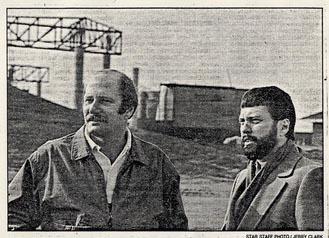
Detroit Pine Knob does huge business,” and so David and I went to Detroit in 1978 to look at Pine Knob. We were disappointed because we saw how much it would cost to build an amphitheater. It was a major undertaking and in 1978, there was no way we could come up with seven or eight, or $10 million to build an amphitheater. So we came back and we made a deal with the sports center and we started doing summer concert series at the Indianapolis Sports Center. Did that for 10 years, I think, before Deer Creek happened. And we started looking for sites to build Deer Creek and we looked at Westfield, Indiana, I think was our first location. And we’d have zoning meetings and we’d have these meetings with the local people. And instead of trying to build a waste treatment plant in the middle of a shopping center or something. ‘Cause nobody wanted it near them. So we looked at Westfield first and we were shot down there. And we went to northwest Indianapolis, and we were kicked out of there pretty quickly. And then we went to downtown, ’cause we thought we were gonna get it done downtown at White River State Park. And we got shot down there, and then when we found the Noblesville site, we found 200 acres there and it wasn’t zoned. It wasn’t like we had to get new zoning for what we wanted to do, there was no zoning there. It was just farmland and I will always remember, learned a good lesson then. We went to buy the 200 acres and the guy had it for sale for $1,800 an acre and made a big mistake. We offered him what he had asked. If we’d have offered him 1,400 an acre, we probably would have brought him up to 1,600 an acre. We offered to buy it for 1,800 acre. And he said, no, I think about $5,000 would be good. It cost us $1 million. Anyway, it was a lesson learned, but anyway, we had a big fight in Noblesville, too. That took maybe nine months or a year. I can’t remember, six months. I do have all those records, but it was a big fight and we had a lot of commission meetings, and we finally got it passed. And all the neighbors at Deer Creek, they thought we were gonna drive their property value down. Nobody wanted to live out there, which is absolutely the opposite of what happened. The property values went through the roof. They built everything up around there. It was a great thing for the Noblesville area surrounding the amphitheater.
Marc Allan – And then you did get the White River State Park project done eventually, right?
Steve Sybesma: Well yeah, Dave got that done after, he got that done in 2004, yeah. ‘Cause I quit in 2000.
Marc Allan – For any particular reason?
Steve Sybesma: You know, I guess I was been doing it for what, almost 30 years, and we were working harder and harder. More like I was more independent and the corporate thing wasn’t exactly what I liked, but maybe it was a mistake, but it’s what I did and I can’t look back. But when we sold the company, it stayed three years after we sold it, so we had made a lot of money and I wanted to go out and see the world and enjoy it. So I traveled around the world for a few years after I retired.
Marc Allan – When you did sell out, it was mostly because everybody was selling out, right? I mean, was it SFX that came along and bought everything up?
Steve Sybesma: The business was getting tougher and there was some consolidation that was gonna happen. If we stayed independent, we might lose on the deal. The guy that bought was a guy named Bob Sillerman and I had known him for many years. And then he bought WFBQ Radio right before he bought us. And I called him up and I said, “Hey Bob, when you come into town, let’s go out to dinner or something,” and he said, “Well, I’m probably not gonna come into town.” But he said, “I just bought Delsener/Slater,” which was his first purchase, the New York promoter. And he said, “Would you be interested in selling your business?” and I said, “For enough money, sure.” For the right amount of money, anything’s for sale. And we had tried to go public before that because we were growing and expanding. And we built the amphitheater in Columbus, Ohio and we refurbished the theater in Louisville. And then we were doing the Murat Theater at the same time. So we tried to go public and that failed, and that was a pretty brutal year for us because it’s expensive to do and it didn’t work, so.
Marc Allan – Two other things. One is clearly, your high school guidance counselor did not tell you that you should go into concert promotions. How did you know to do this?
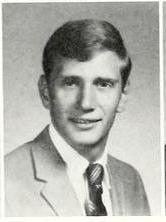
Steve Sybesma: Well, I didn’t know and I was 20, 21. I was a heavy equipment operator. I worked construction, running a bulldozer on interstate highways and stuff. I lived in a house with three guys in 1971 and one of them was a record rep. One of them was a DJ for WIFE radio and the other guy, Harry was an agent for Go-Go Girls. And one day, Harry and I were sitting around saying, “Why don’t we do a rock concert?” And that’s how I got into it. It sounded great and started doing it.
Marc Allan – And the last thing I want to ask is just, let’s go back to the website. What are you hoping will come out of this?
Steve Sybesma: I’m not really sure. I think I’d just like to see it become a good history that’s there, and where people can contribute to it and make it more complete, and then it’s always there as a reference. I just didn’t want the history to be lost and all this history that we had, I just thought it was better shared than it was just being in my books and my boxes, and stuff that might basically be gone forever. I am writing a book. I think I have a pretty interesting book to write. I’m working on that right now.
Marc Allan – When do you hope to have that out?
Steve Sybesma: I think it’s gonna take me a while, maybe nine months to a year.
Marc Allan – Well great, well, thanks so much. This has been fun, I learned a lot. And there’s more to learn, so it’ll be fun to watch the website develop and see what comes of it and what people’s memories are.
Steve Sybesma: Good to talk to you, Marc. And I appreciate you reaching out to me. Let’s just keep in touch.
Marc Allan – All right, take care, we’ll talk again.
Steve Sybesma: ‘Kay, thanks a lot.
Marc Allan – Buh– bye.
Steve Sybesma: Okay.